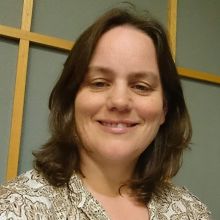
Dr. Susan E. Mullally is an astronomical time series data expert and has used these skills to study the population of exoplanets, variable stars and binary stars in our Galaxy. At the Space Telescope Science Institute (STScI) in Baltimore, she works to ensure the scientific productivity of the ever-growing data collected by NASA's space telescopes, such as JWST and TESS. Before her employment at STScI, Dr. Mullally was a scientist for the Kepler Science Office and the SETI Institute. As part of that team, Dr. Mullally led the creation of the final Kepler catalog of exoplanet candidates to reliably determine the frequency of small planets in our Galaxy. She has also worked to find and understand a new class of tidally-distorted, eccentric binary stars known as heartbeat stars. Earlier in her career, she developed tools and organized the data collection efforts of the Whole Earth Telescope, a collaboration of ground-based telescopes that work to measure the variability of white dwarf stars.

As the head of the European Space Agency (ESA) office at STScI, Dr. Chris Evans oversees all ESA personnel who support the Hubble Space Telescope and the James Webb Space Telescope. He is also responsible for Hubble and Webb outreach efforts in Europe, which include the dissemination of the results from both observatories and communications with the public. Additionally, he serves as the ESA project scientist for Hubble and Webb guest observers. Before joining the institute, Dr. Evans served as the head of science at the UK Astronomy Technology Centre (UK ATC) based at the Royal Observatory in Edinburgh, Scotland. In this role, he led the Project Science Group, developed new projects of strategic interest, and served as the principal investigator of the UK Extremely Large Telescope (ELT) Instrument Programme, which supports the UK’s roles in several ELT instruments. He also served as the project scientist and UK principal investigator for the Cassegrain U-Band Efficient Spectrograph (CUBES), a near-ultraviolet spectrograph for the Very Large Telescope (VLT). Dr. Evans is an active researcher and a member of SPIE, the international society for optics and photonics.
He has served as a program committee member for SPIE’s biennial ground-based and airborne instrumentation conferences since 2010 and as chair for the past four meetings. Evans has also served as chair of a 2021 near-ultraviolet spectroscopy workshop and a 2017 conference about spectroscopic surveys with the ELT. He has mentored PhD students since 2008.
SETI Talks are presented to our audience at no cost and are supported by contributions from supporters like you. If you are interested in sponsoring a future SETI Talks, please email us at development@seti.org .
This SETI Talks will be online only and will not be live streamed on social media, please make sure to register for access to this event.
